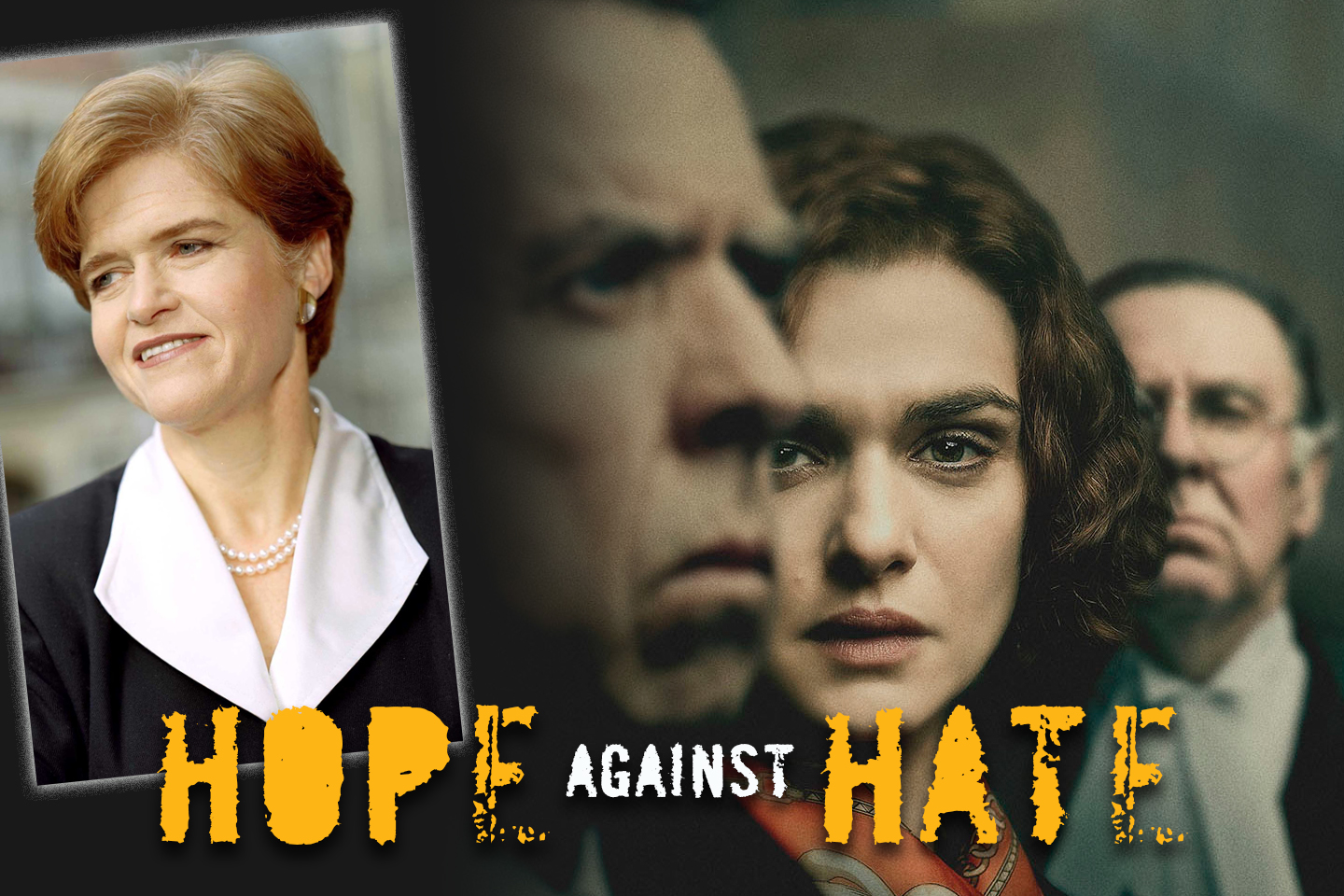How is Anti-Semitism Alive Today?
By Vivian Henoch, Editor myJewishDetroit
May 30, 2017
Is anti-Semitism on the rise? What is our response? How related are our local and global Jewish communities? What does BDS (Boycott, Divestment, Sanctions) mean to students as it plays out on Michigan campuses today? To explore the complexities of these questions, Jewish Detroit gathered in strength for “Hope Against Hate” – a one-day conference held in May and co-hosted by the American Jewish Joint Distribution Committee (JDC) and the Jewish Federation of Metropolitan Detroit.
Keynote speakers for the event included JDC’s Executive VP Emeritus, Alan H. Gill, and Deborah E. Lipstadt, Professor of Modern Jewish and Holocaust Studies at Emory University.
“Jewish life is resilient. If I were a sociologist, I would draw a very simple scale for Jewish life: On one end of the pole I would put down “Oy” and on the other end I would put “Joy.” Think about it. Jewish life is really balanced between Oy and Joy. Let us never stop being vigilant about the Oys which face us. But let us never turn them into our raison d’etre. Let us also celebrate the Joys.” – Deborah E. Lipstadt
No stranger to Detroit and a past speaker at Federation events, Lipstadt is author of Denial: A Holocaust History on Trial. Her most recent book is Holocaust: an American Understanding and, currently, she is working on the book, The Anti-Semitic Delusion: Letters to a Student.
Excerpts from the panel discussion “Squeezed from Both Sides”
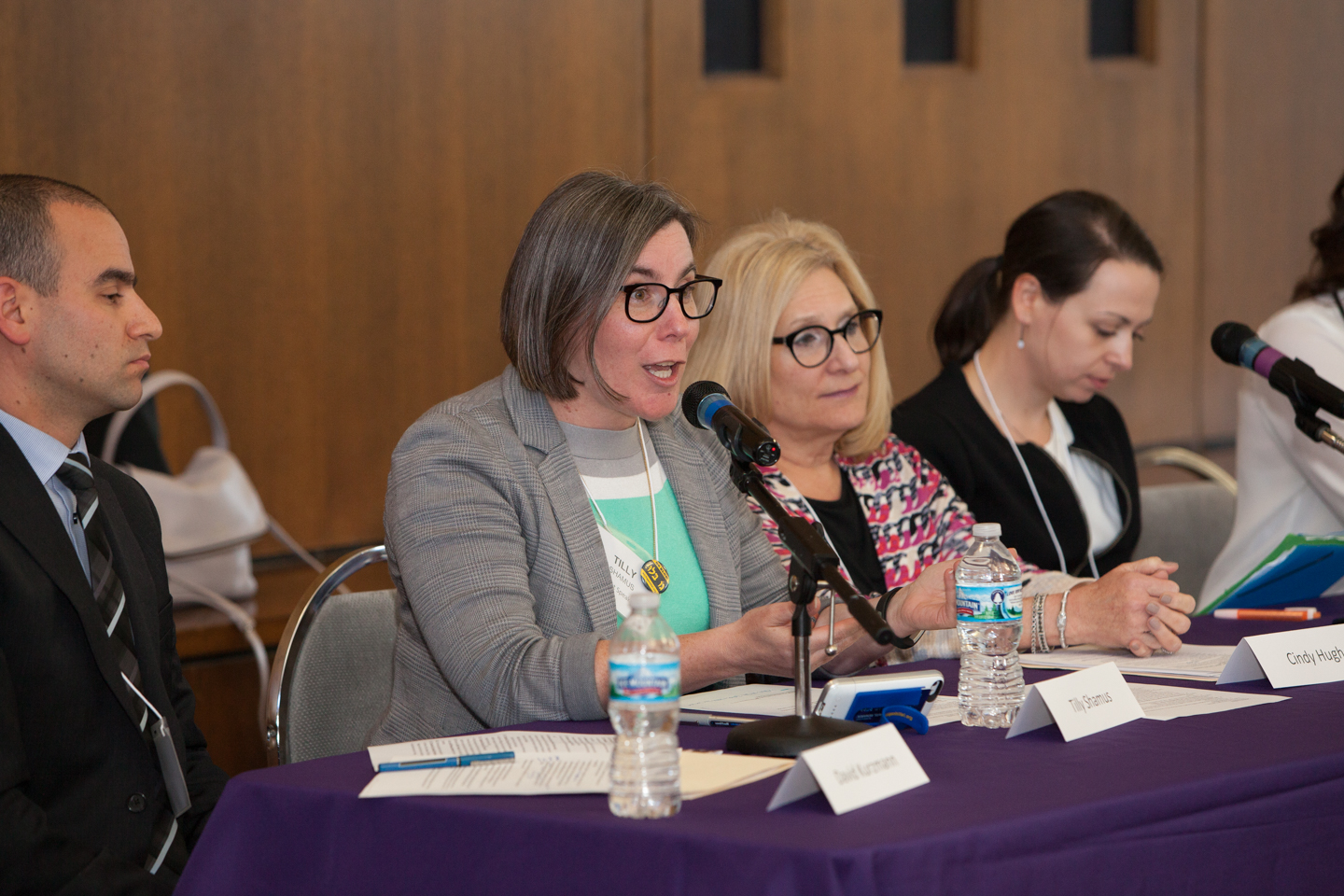
For those who missed the conference or didn’t have the opportunity to attend the breakout session entitled Squeezed from Both Sides: Young Adults and the Challenge of BDS and Anti-Semitism on Campus, we offer excerpts from the discussion with panelists:
Tilly Shames — Executive Director, University of Michigan Hillel, serving more than 6,000 students on campus in Ann Arbor
Cindy Hughey – Executive Director, MSU Hillel and the Hillel Campus Alliance of Michigan (HCAM), serving 3,500 students in East Lansing and another 1,500 students statewide on HCAM campuses
David Kurzmann – Executive Director of JCRC/AJC – Partnership for Community Relations and Jewish Advocacy. David also serves on the boards of the Interfaith Community Leadership Council (IFLC) and New Detroit
Anja Olenick – JDC Manager Berlin, representing Bambinim, a JDC initiative for community development, and the Young Adult Roundtable, a platform that networks young Jewish leaders from 20 different Jewish organizations
Maia Ferdman – Program Coordinator, Global Jewish Experiences, The Jewish Federation of Greater Los Angeles and Former JDC – Entwine Global Jewish Service Corps Fellow with Junction, a pan-European JDC initiative for young adults
Andrea Siegel – (Moderator) Former JDC – Entwine Director of Jewish Learning
Andrea:What would you like us to know about young adults now? What brings you to our discussion?
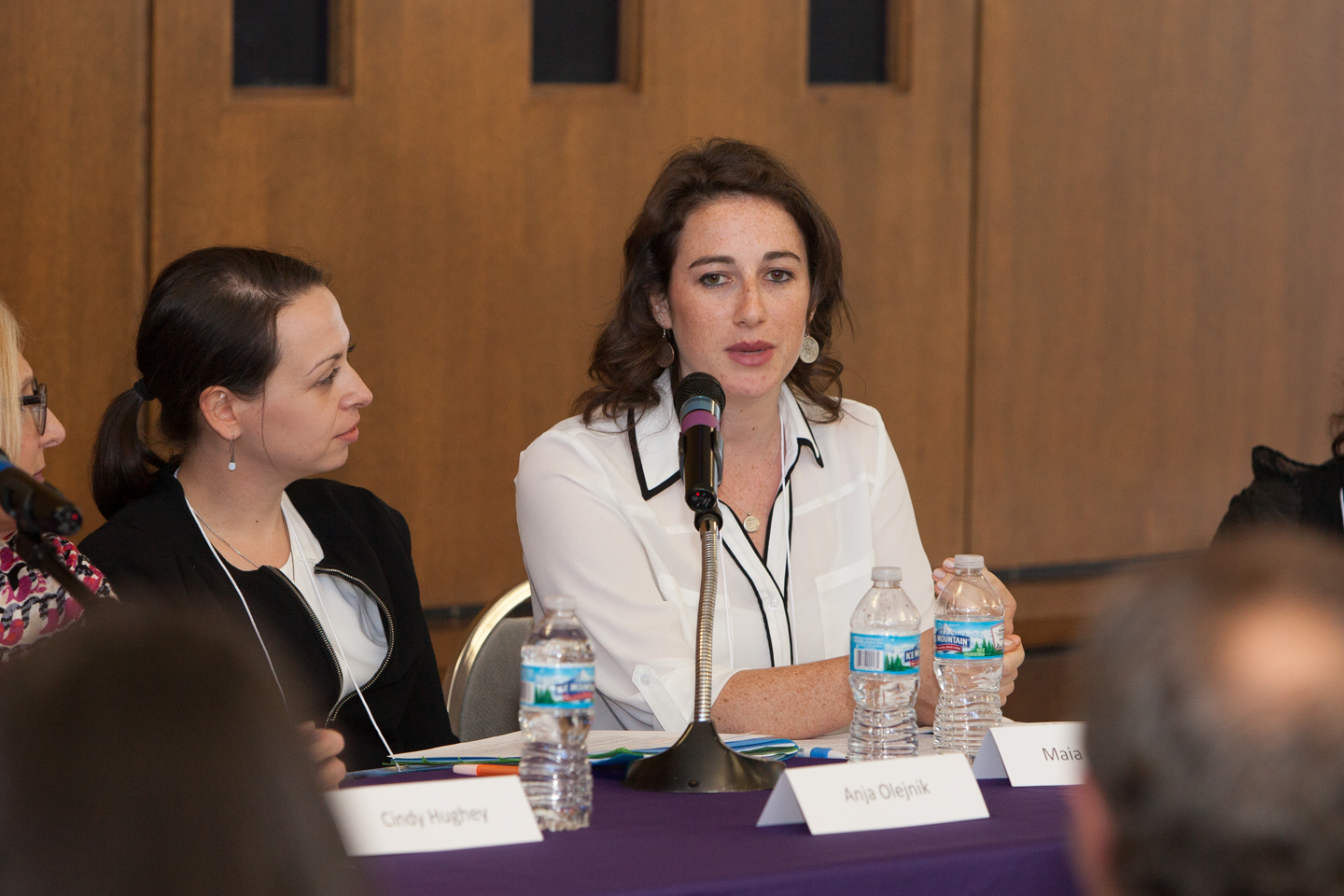
Maia: The Fishel Fellowship [a partnership between The Jewish Federation of Greater Los Angeles and JDC Entwine], took me to India, Israel and Bulgaria to explore and contribute to global Jewry from multiple perspectives. While in Bulgaria, I had the extraordinary opportunity to work for Junction, an international initiative for young adults by JDC Europe and The Charles and Lynn Schusterman Family Foundation. Through this position I was able to travel, organizing international festivals and events for people from a wide spectrum of religious observance – seeking to define what it means to be Jewish in the world. I’m still exploring that question with the idea that we’re always learning and discovering our Jewish identity.
Anja: Based in Berlin, I’ve worked with the same initiative as Maia. Berlin is the fastest growing Jewish community in Europe, a very exciting place to be a Jew today. We’re a diverse, creative community in a city where people from all around the world are coming to explore and where many interesting opportunities exist for Jews to build community.
Cindy: I represent the traveling Hillel troupe – with a presence on multiple campuses across the state, connecting to students of all backgrounds. Our focus is on educational programming – fostering Jewish identity, leadership skill development in our students and advocacy – specifically Israel advocacy.
Tilly: I love my job! I know you hear a lot about U of M when BDS and other anti-Israel activity on campus hits the news– but it’s all those days in between when it’s such a pleasure to work with our student groups. We reach over 300 students every week with Shabbat dinners. It’s a vibrant time to be Jewish on campus.
David: U of M is where my story started. In 2006, I went back to Ann Arbor in my junior year, and the atmosphere on campus following the second Lebanon War spurred me to action: to fight BDS and anti-Israel activity. I felt that was my calling. Now, I approach the work with a different perspective – that to be a professional in the community is to understand the many different viewpoints that shape our response to things that happen. I’m here to support my colleagues —to provide resources and to support education.
Q: Andrea (to panel): From your perspective, what does Anti-Semitism look like, how is it alive today?
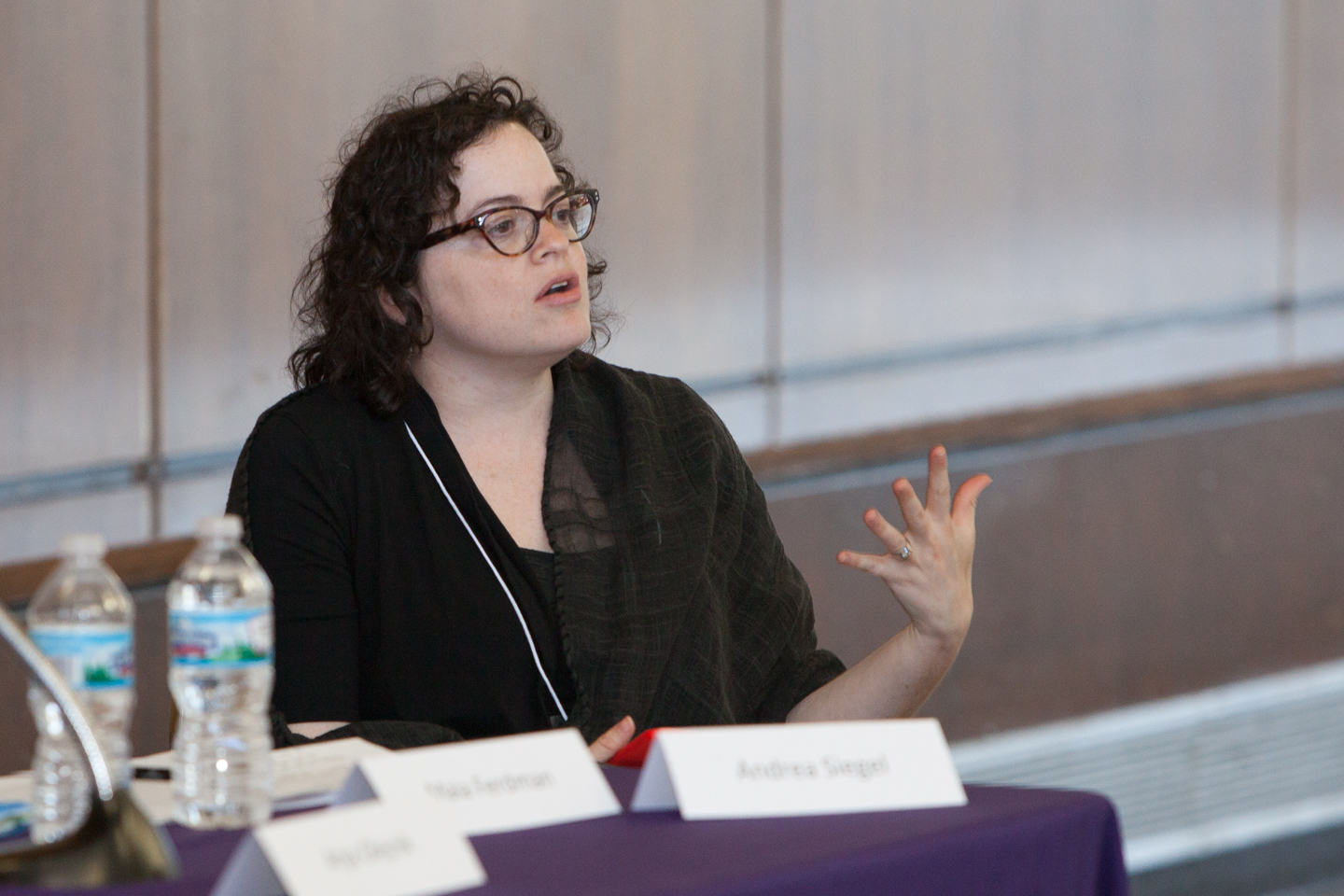
Anja: We’re talking about many different experiences. In Europe, Anti-Semitism, nationalism, and racism and xenophobia are alive. As Jewish professionals, we are concerned. But what I really want to say is anti-Semitism is the background music that we experience as young adults, it’s not something we encounter every day as Jews. I think that Jews in Europe are comfortable as Jews; Anti-Semitism does not define us as Jews.
“Anti-Semitism is the ‘background music’ that we experience as young adults, it’s not something we encounter every day as Jews.” – Anja Olenick, JDC
Tilly: Our theme, “Squeezed from Both Sides,” is something we experience on campus – something we’ve seen. And it really fit the student government election campaign last spring, with a sharp rise in hateful messaging and posters – targeted to Muslims, the LGBTQ community, racial minorities, women and Jews. It is important to understand that we are among those being targeted right now – there is clear anti-Semitic activity coming from the far right and emboldened by the political climate. But is it something that most of our students don’t see or don’t interact with unless someone brings attention to it through Twitter or The Michigan Daily – so many of our students are not affected by it.
David: My answer is it depends on the audience I’m talking to. Unlike my Hillel colleagues who are interfacing with one group of students at a time. I work with a mix of student groups across the community. Working with a group of high school seniors in public school recently, I posed the question, “Where do you see anti-Semitism in your life and what does it look like?” According to the kids, it’s the comment, the ignorant joke, it’s the bullying, it’s the taunting . . . carelessly directed to minority students in general and not only to Jewish students . . . “It’s just high school,” they tell me.
Maia: I want to offer a counter image.When I was a student at UCLA (before I became a Fishel Fellow), divestment from Israel was a prominent topic on campus. And then I left for Europe. And suddenly nobody was talking about it. I don’t want to minimize anti-Semitism, and how serious it is. But, contrary to what I expected, Europe is not a hot bed of anti-Semitism that’s threatening our communities to the extent that we might think. In Europe, I met young Jewish adults – from Bulgaria, Latvia, Poland, Italy and beyond. They were talking about the economy, halacha, what it means to be Jewish, according to Jewish law. They were talking about what kinds of Jewish experiences they wanted. Anti-Semitism was not the driving force in any of the initiatives that I saw. That was surprising to me, especially because of the context from which I was coming.
Cindy: My experiences on our campuses are a little different. Except for MSU, most of our campuses have very small Jewish populations. There could be 30,000 students on campus—and 200 Jews. We are talking about campuses where many of the students have never even met a Jewish person. So, the kinds of anti-Semitism we encounter mostly are the kinds we all grew up with. It’s the acquaintance who said something or made an inappropriate joke, and most of it isn’t purposefully hateful, it comes from a place of ignorance. And when I ask students how they respond and what do they do about it . . . I’m finding that our young people don’t feel comfortable confronting an anti-Semitic comment. They are afraid to draw attention to themselves, lose a friend.
I will tell you we have a bigger problem with professors. . . on three or four of my campuses, there were cases where professors infused anti-Israel rhetoric into their curriculum. We can complain to the administration . . . but students are very reluctant to report it, because they are afraid to be penalized with a lower grade.
Andrea: Turning our discussion to the international Jewish community, what are the challenges facing young Jews in the communities you’ve worked and how are they tackling those challenges?
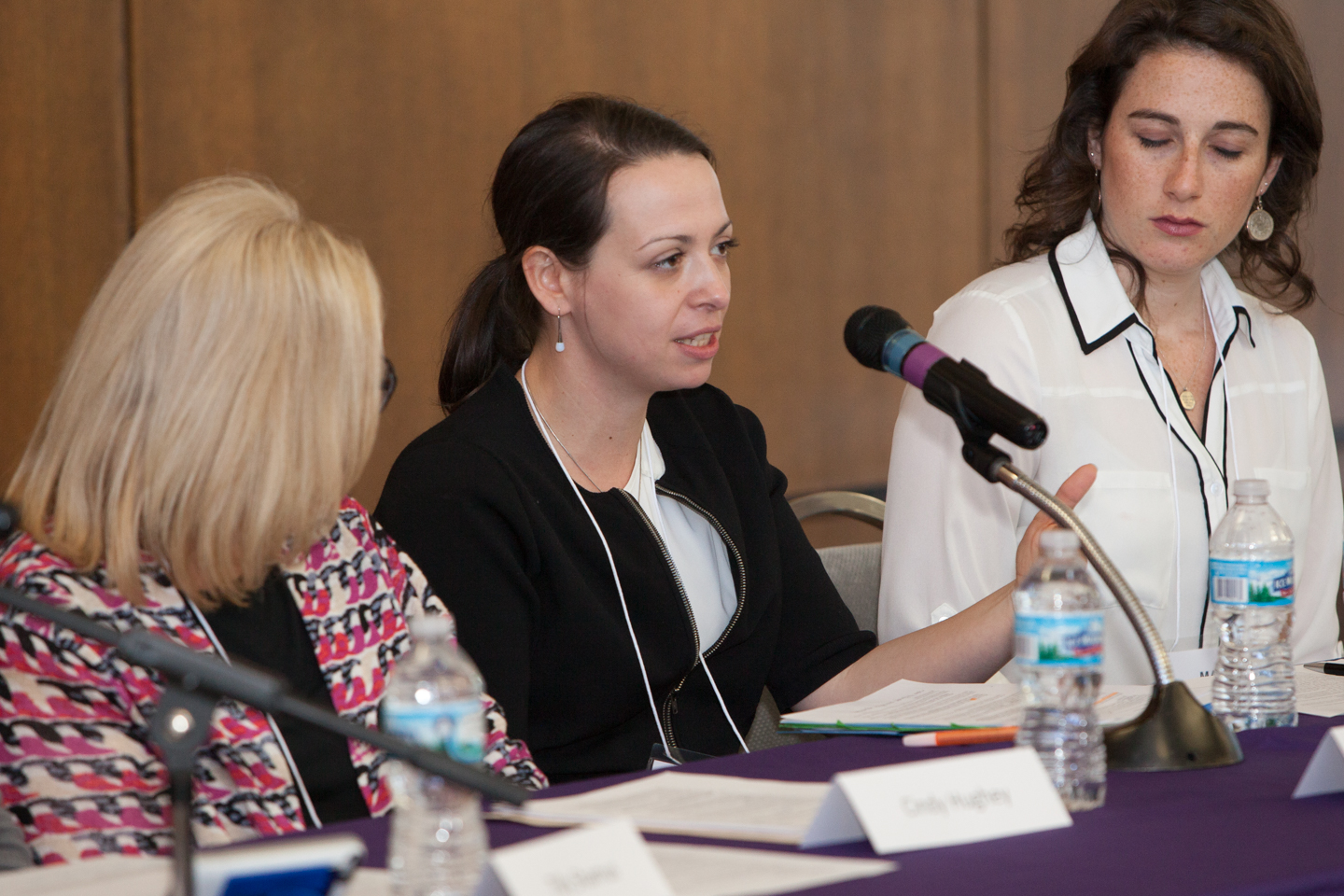
Anja: Our biggest challenge in Germany – and for the European Jewish community in general – is that we have many small communities across the country where young adults feel disconnected, especially if they are facing anti-Semitism on campuses. Our job at JDC is to strengthen the connections between disparate communities, giving young adults and professional leaders the opportunities to share best practices, create regional coalitions and build partnerships on a global scale.
Maia: The challenges of these different communities in Europe are unique to their specific context. In Bulgaria, for example, there’s a beautiful century-old Orthodox synagogue the community points to with pride. But there’s no rabbi to lead services, so they bring in an Orthodox rabbi from Israel. But almost everyone in Bulgaria is secular! So, imagine the disconnect in religious life between the traditions we associate with Judaism and the young people whose Jewish connection is based on something different.
The kinds of international programs that JDC and Junction run for young adults is really a way to bring together a meeting of minds – to connect young Jews in ways that are relevant to them, regardless of country, language or religious background. And, in doing so, we are building much deeper connections and cohesive communities.
Andrea: (to Cindy) How are young Jews here creating partnerships and coalitions to foster leadership and advocacy across the communities you serve?
Cindy: Tilly and I do very similar things: we work with many national pro-Israel organizations. Through the support of the David Project, for instance, we take non-Jewish students and young leaders to Israel once a year. Two years ago, Tilly and I shared a bus of 40, each bringing 20 students from our campuses. I can’t tell you how powerful that experience was. On these trips, the students bond and come back excited about Israel – asking us how they can help us with Israel advocacy on campus. Imagine the power behind something like that. That is the strongest kind of coalition building that we can do – and we do it with the help of national organizations.
Tilly: With the David Project, a core lesson is that relationship building is the most important piece of our work. For example, in dealing with divestment issues, we work with students on both sides of the issue, to address their questions and to understand what’s important to them.
I will add that it’s important to be good partners on campus – especially when hateful situations target other minority groups. Not just because we follow the principle of Hillel – that which is hateful to you, don’t do unto others – but also because we need to show our concern for their issues, or there’s no way they’ll show their concern for our community when we too are targeted on campus.
Andrea: As multi-generational Jewish community, how best can we support our young adults.
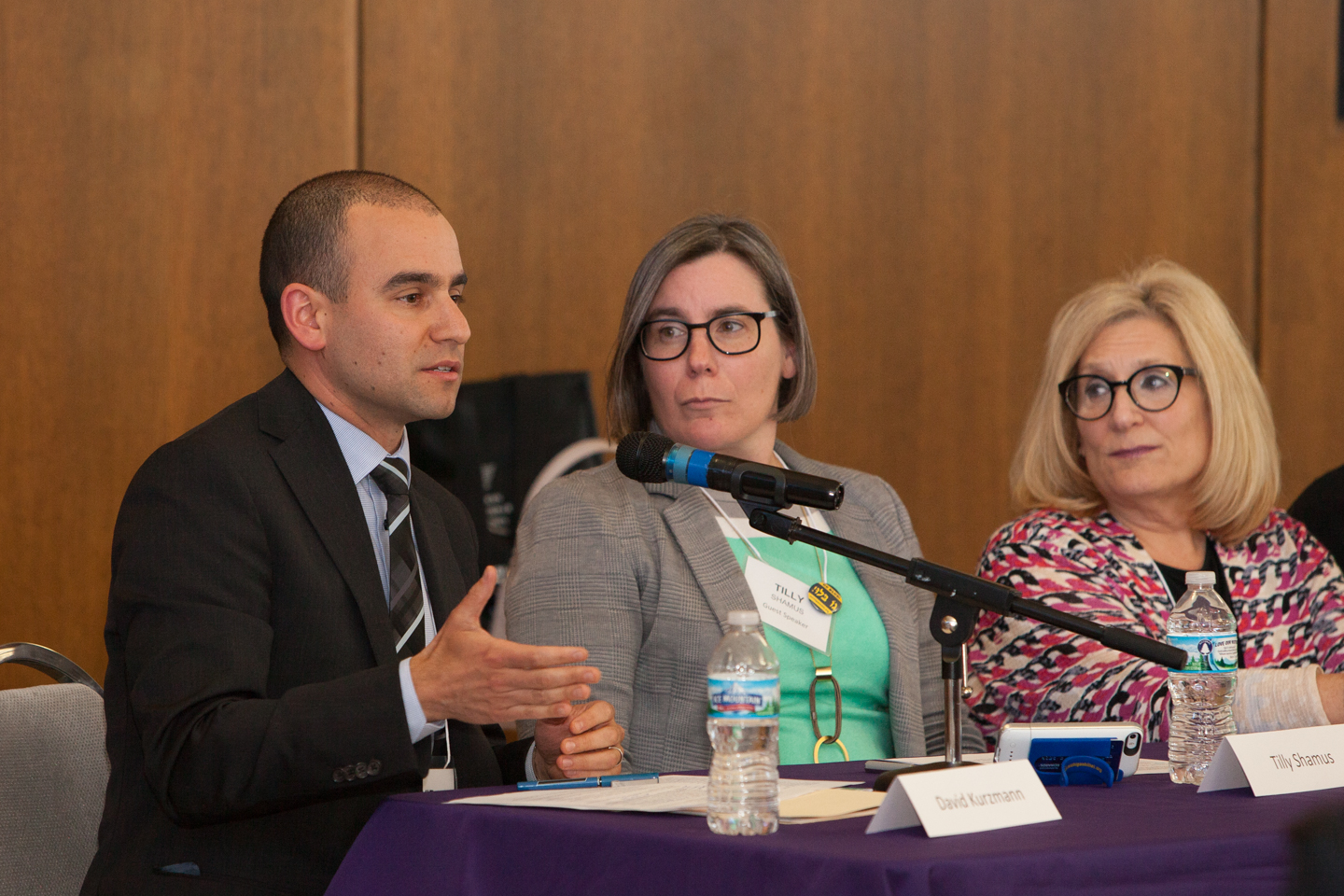
David: I want to underscore a point that Tilly made: We have to be in relationship with our neighbors, that is the foundation of our work. The two pillars of our organization (which brought together the JCRC and AJC) are community relationships and advocacy– our advocacy is not going to make headway if we don’t have relationships — if we don’t understand where people are coming from.
How can we relate to this multi-generational challenge? We can listen. If we are standing out telling the story on our student’s behalf, we’re just missing the mark. I make every effort to bring students from campus — to tell their own story. Not every student is wired to fight back. But if we engage them in the right way – help them find their voice – they can get involved in ways that are personal and appropriate to them.
“Not every student is wired to ‘fight back.’ But if we engage them in the right way – we can help them find their voice.” – David Kurzmann, JCRC/AJC
Maia: What David has said about listening is important, but I think there’s also something deeper. We need the space to explore. That’s something I learned in Europe that I didn’t realize I was missing. I came from a vibrant Jewish community in San Diego. I didn’t have that space to just focus on why am I Jewish – why is that important to me. We can’t start the conversation in college with the question: How do we help students fight the threat of anti-Semitism? The first question to ask is: Why are you here? What does being Jewish mean to you?
I was raised with the idea that Israel was the land of milk and honey – this Jewish dream. And suddenly in college I was hearing that Israel was the land of occupation, a land of politics. It’s not that students are ill equipped to talk about Israel in order to defend it, I think that we are talking about two different Israels: the Israel of our Judaism and our identity, and the nation-state with political interests and conflicts. And we’re talking about a political situation where people fall on a wide spectrum, and they have that right. I find myself oscillating on that spectrum all the time. Rather than try to equip us with scripts to fight against BDS, start the conversation about what Israel means to us in the first place and how to reconcile the two different Israels we observe and experience.
Tilly: I agree wholeheartedly. Our students are coming to campus afraid that they are going to have to go out there and fight – I want students to come to campus grounded in who they are as Jews and grounded in their relation to Israel. And part of that is having experienced Israel – knowing a fuller history and have a fuller sense of the complexity of what Israel is facing today.
Cindy: What I’m seeing on campuses where there are so few Jewish students is that they become the “Jewish expert.” The issue is not just about Israel . . . it’s “The Jewish.” I think what parents need to recognize when sending their kids to Central Michigan is to prepare them. Our kids need to be prepared for questions they’ll be asked at every Jewish holiday – What is this, why do you celebrate? At MSU, we have 50,000 kids — many of them are not attuned to any of the anti-Semitic or anti-Israel sentiment around. They’re in sports. In medical school, they never get their heads out of their books, there’s all kinds of experiences they have in college. Preparing them for what they might encounter is the best thing we can do.
Andrea: To wrap up, what is your take-away? What actions would you suggest?
Maia: Moving beyond the topic of BDS and anti-Semitism, I would advocate that young people be given the space – and responsibility – to explore their own identity. That’s what I learned in Europe from young adults actively searching for their Jewish identities. So, when conflict comes – and it will – they know what they are defending and why.
Anja: As a European Jew, I want to add that, despite the challenges we are facing in Europe – we are choosing to stay—to build connections, to build community in the places that are home, where we live and work, where we have families, where we have connections and history . . . where we have our future. So, please come to visit. Come to Berlin! We need you. We need all our global connections and we need to show you what you’re missing.
Cindy: Here in Michigan, we are very fortunate. I think we need to have faith in the strength of our community, in our students and in the work that we are doing at Hillel.
Tilly: I get to work with young people every day, so I get to be hopeful and see in them a real passion for the Jewish community. We get to them at a time when they are starting to write their own Jewish story, and we’re giving them every opportunity to develop the competence and knowledge to share that story with others.
“I get to work with young people every day, so I get to be hopeful and see in them a real passion for the Jewish community.” – Tilly Shames, U of M Hillel
David: Ditto to Cindy’s point—I’ve had the privilege of working with college campus professionals across the region. The number of people participating in any given conference call – on any given issue on campus – is remarkable. It shows that our community cares, we have the infrastructure in place and the dollars to support it. We have strength in our Jewish community, and where there’s strength, there’s hope.

